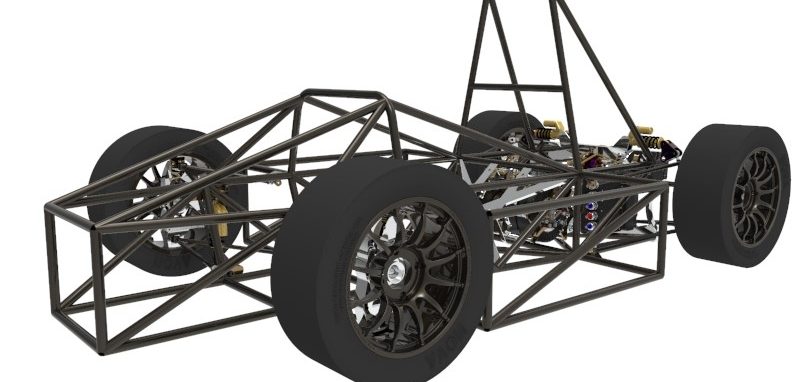Formula Student is an excellent proving ground for aspiring motorsport engineers, and though Covid-related restrictions have limited teams’ access to facilities for most of 2020, this hasn’t stopped Warwick Racing, from the UK’s University of Warwick, pushing forward on development of its latest car.
The team consists of students from multiple departments including the School of Engineering, Warwick Business School and the Department of Computer Science, with the help and facilities provided by WMG (Warwick Manufacturing Group). The team would normally have spent the summer months building its latest car, WRe2, but instead, team members had to content themselves with a virtual validation program.
The design of WRe2 was started by the fourth-year team (different student years work on separate vehicle projects) in October 2019, and in a first for the team, the car is equipped with a twin rear motor system, utilized to provide greater control over power delivery. To harness the potential of this layout, the team’s Control Systems group says it has been working on developing a traction control system, employing an E400 Automotive Motor Controller provided by UK-based embedded systems specialist Embed. According to the team, the control framework was developed in Simulink with future expansion of functionality kept in mind throughout the process.
Rens Bossers, the chief powertrain engineer for the coming year, commented, “WRe2 is a level up for Warwick Racing. By learning from issues found during the build of WRe1, our first electric car, the design is very resilient. As reliability is historically a very significant factor, WRe2 puts us in great stead for a very competitive finish at our annual competition, FSUK. The dual motor setup is also a massive step toward the four-wheel drive powertrain that we aim to achieve in the near future.”
Design and validation of the new vehicle hasn’t been the only activity occupying the team’s time, it was also able to virtually race its current vehicle, WRe1, in the FSUK 2020 Virtual Challenge. The team achieved a respectable finish in several categories, including a fifth place in the costing element of the competition and 10th in the (virtual) dynamic competition.



